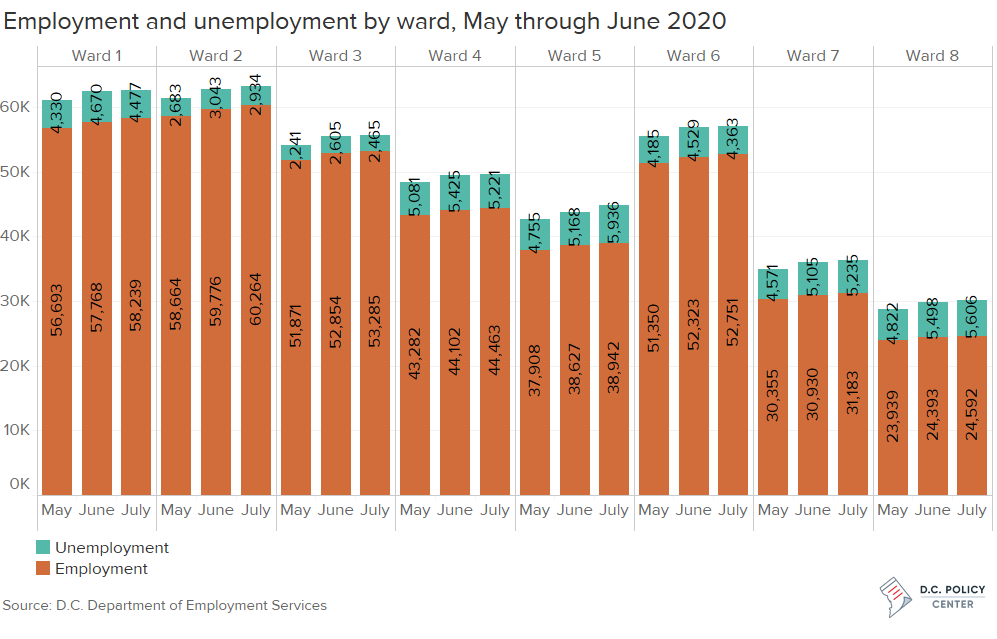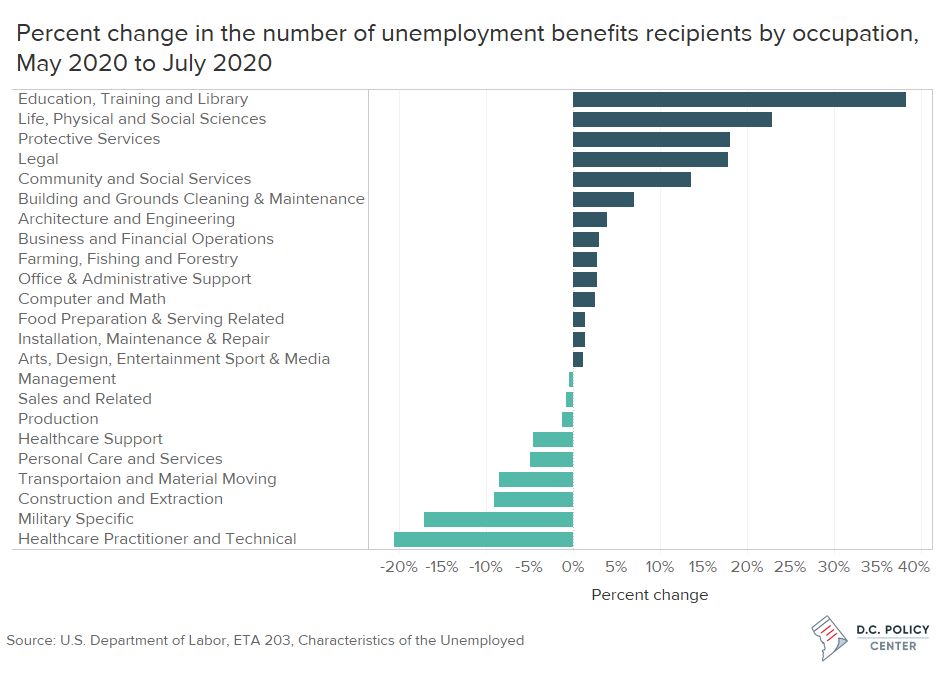New data released by the District of Columbia Department of Employment Services (DOES) show that between May and July, D.C. saw a slight growth in its labor force and employment, as well as a marginal decrease in unemployment. Between May and July, labor force participation increased by 5,300 workers over age 16 and now stands at 393,100 workers. 6,200 District residents gained jobs, bringing resident employment figures to 360,000 workers. The unemployment rate fell marginally, from 8.8 to 8.4 percent.
Employment and unemployment increased across all wards
The city’s labor force consists of those over the age of 16 who are either employed, or unemployed and actively seeking work. According to the DOES data, both employment and unemployment have grown throughout the District. Between May and July, residents of Ward 1 and Ward 2 realized the largest gains in the number of people employed, while Ward 8 saw the smallest relative growth. Ward 5 saw the greatest increase in unemployment figures as well as the lowest growth in labor force participation. While small improvements in the unemployment rate were seen between June and July, six of the city’s eight wards saw slight increases in the unemployment rate overall between May and July. Wards 7 and 8 saw the highest relative growth in the unemployment rate, while wards 1 and 4 saw no change. The unemployment rate continues to stand above 10 percent in four wards.
Growth rate of unemployment benefits claims declines in the District
Department of Labor data show that between May and July, the rate at which the number of unemployment insurance recipients increased was significantly slower than the rate of increase between April and May. The District added 1,347 unemployment benefits recipients between May and July, bringing the total number of claimants to 73,522 (1.9 percent increase). According to the data, women continued to experience greater job losses (4.2 percent increase) than men, with the number of men receiving unemployment benefits declining during this time period.
Between May and July, only the District’s Black or African American workers experienced a growth in the number of unemployment benefit recipients, while all other demographic groups observed saw a decrease. The number of Hispanic and Latino unemployment claimants had a greater increase relative to the number of claimants who are not Hispanic or Latino, changing the trend observed between April and May.
The District’s younger workers are still experiencing greater losses than older workers , and their share of unemployment benefits claimants continues to grow. Between May and July, workers under the age of 22 saw the largest increase in the number of unemployment benefits recipients, at 7.8 percent. Workers aged 22 to 24 also saw a relatively large increase in the number of claimants, in contrast to the change between April and May, when workers aged 65 and over made up a larger share of those claiming unemployment insurance benefits.
Broken down by occupation, education workers were those hardest hit between May and July, and they experienced the highest increase in the number of unemployment claims a 38.3 percent increase. Life, physical, and social science workers such as psychologists and biochemists, and protective service workers such as security guards were also greatly impacted. The number of healthcare practitioners and healthcare support workers claiming unemployment benefits fell by almost 21 percent, reversing the trend observed between April and May.
About the data
Employment and unemployment data, and ward-level employment data are released by the D.C. Department of Employment Services. Data on characteristics of unemployment insurance recipients are from the Department of Labor (ETA 203). Since this data tracks characteristics of the District’s entire workforce covered by unemployment insurance, it includes those commuting from outside the District.
Feature photo by Ted Eytan (Source)



